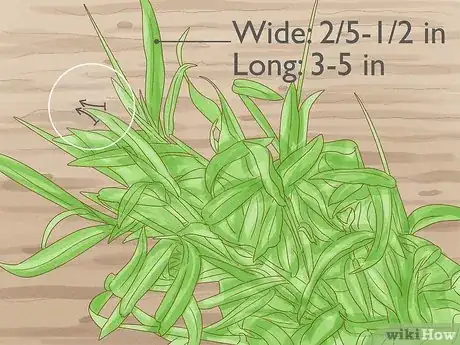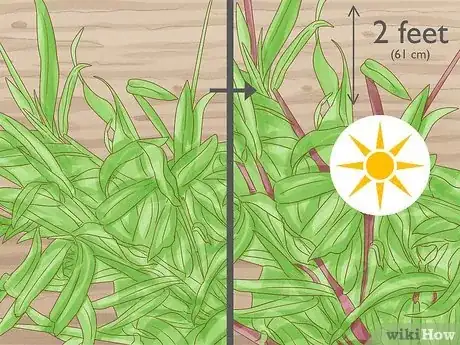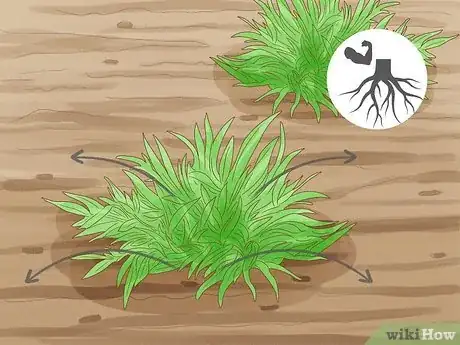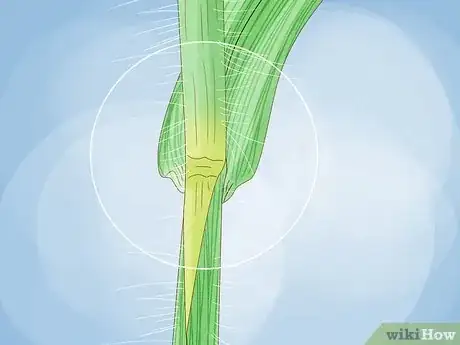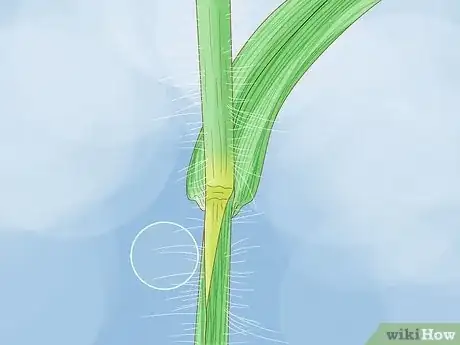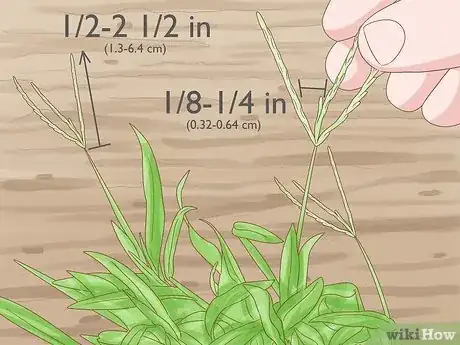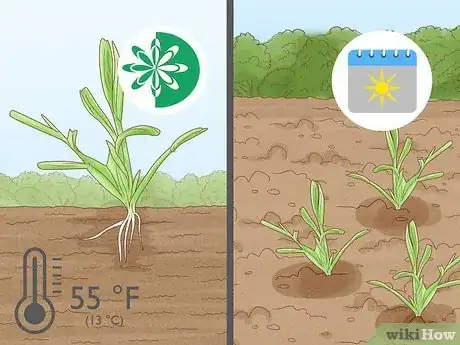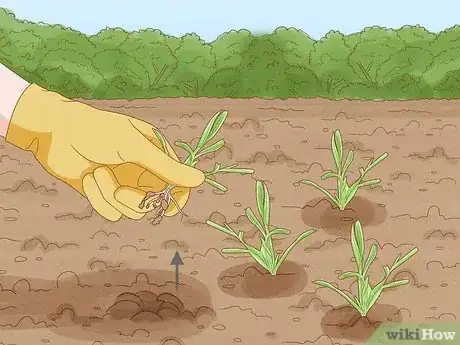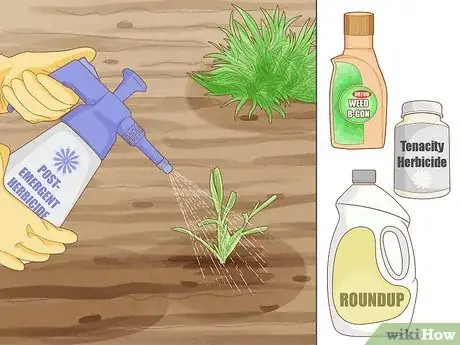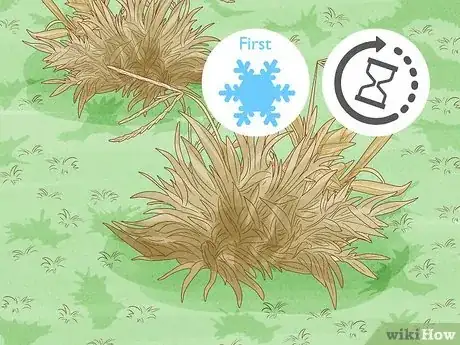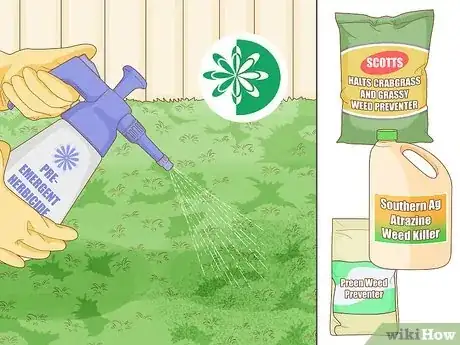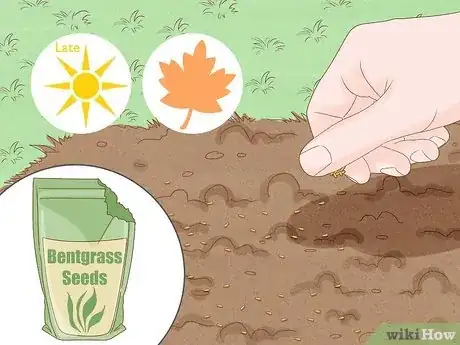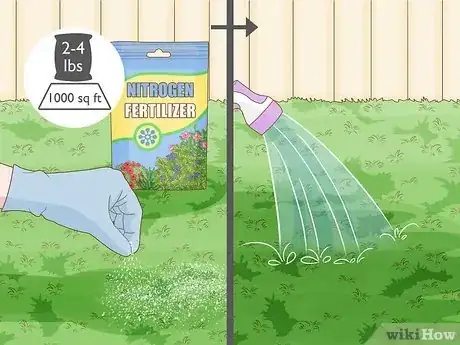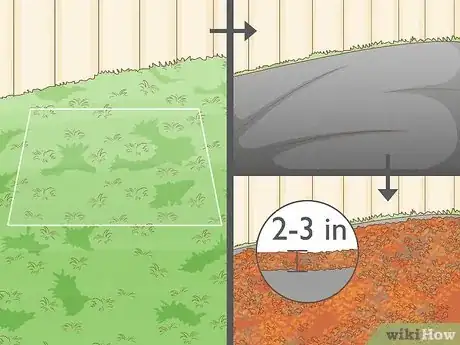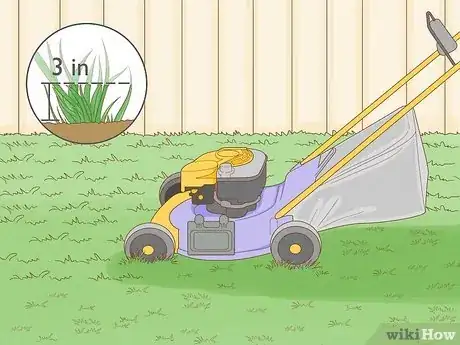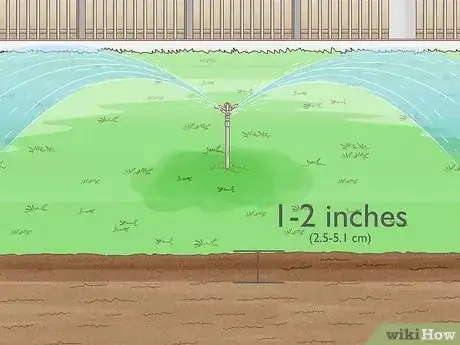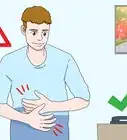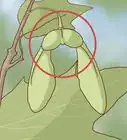This article was co-authored by Grant Wallace and by wikiHow staff writer, Hunter Rising. Grant Wallace is a Landscaper and Owner of Grantlanta Lawn in Atlanta, Georgia. With over seven years of experience, he specializes in lawn maintenance and landscape installation. In 2012, he earned his BA from the University of West Georgia. Grant has been profiled in Shoutout Atlanta, Canvas Rebel, and Voyage ATL.
There are 13 references cited in this article, which can be found at the bottom of the page.
This article has been viewed 5,245 times.
If you've got a patch of troublesome weeds in your yard, crabgrass is one of the first names that may come to mind. This invasive species can spread throughout your lawn pretty quickly, but how can you tell if that's what you're dealing with? While it may look like some other weeds, crabgrass has unique features to help you tell it apart. Keep reading to find out how you can spot crabgrass in your yard and what you can do to prevent it from growing in again!
Steps
What does crabgrass look like?
-
1Wide light green blades. Regular turf has thin blades of grass, so you can easily tell it apart from patches of crabgrass. Both smooth and large crabgrass have similar colorations. The blades are usually about 2⁄5–1⁄2 inch (1.0–1.3 cm) wide and grow around 3–5 inches (7.6–12.7 cm) long with a pointed end. They’ll have a coarse texture and have a yellowish-green color.[1] X Research source
- The blades may have a white strip running down the center.[2] X Research source
- If the blades have a dark green color, then you may be dealing with tall fescue rather than crabgrass.
- If the grass looks dark blue-green, then it could be quackgrass.[3] X Research source
-
2Round reddish-purple stems. The stems start off as the same color as the blades, but they’ll start to darken near the ground throughout the summer.[4] X Research source Unlike other turfgrass with flat stems, crabgrass stems grow in round stalks that can reach up to 2 feet (61 cm) long if you leave it unmowed.[5] X Research sourceAdvertisement
-
3Clumpy, sprawling mats of grass. You’ll find crabgrass in large patches on bare soil or in thin patches of grass. While some of the crabgrass stems grow vertically, many of the lower stems spread out across the ground from a central spot so they can establish more roots.[6] X Research source
- If the grass grows straight up in one area rather than spreading out, you may have quackgrass in your yard instead.[7] X Research source
-
4Jagged membranes where the blades attach to the stem. Check where a leaf connects to the stem for a small, clear membrane wrapping around it called a ligule. If the ligule has a jagged edge on top, it’s a clear sign that you’re dealing with crabgrass.[8] X Research source
-
5Hairs on the blades and stems. Check both sides of the blades and the stems for small hairs covering the surface. While normal turf will look and feel smooth, large crabgrass has dense hair and short crabgrass only has small hairs near where the blades connect to the stems.[9] X Research source
- Young quackgrass could also look hairy when it’s starting to grow, but it grows earlier in the spring than crabgrass.
-
6Seedheads with 3-5 spikes in late summer. As crabgrass is about to drop seeds, look at the main stalk growing from the center for small spikes on top that are about 1⁄2–2 1⁄2 inches (1.3–6.4 cm) long.[10] X Research source The spikes grow about 1⁄8–1⁄4 inch (0.32–0.64 cm) apart in a finger-like arrangement.[11] X Research source
- Bermudagrass and goosegrass have similar-looking flowering stems, but all of the spikes grow from the same place on the stem rather than apart.
-
7Growth in spring and summer. Crabgrass is an annual plant that germinates in the spring once the soil reaches 55 °F (13 °C). Since it needs warmer weather to thrive, you’ll notice patches of crabgrass thriving the most during the summer months. Once the temperatures dip back down in the autumn, crabgrass dies out.[12] X Research source
- Tall fescue and quackgrass have similar appearances to crabgrass, but they’re perennial plants that will survive throughout the winter.[13] X Research source
Removing Crabgrass
-
1Pull or hoe the crabgrass out of your lawn. It’ll be a lot easier to pull crabgrass out of the ground early in the growing season before it establishes roots. Put on a pair of gardening gloves and firmly pinch the base of the stem up. Pull the crabgrass straight up so the roots come out of the ground. If you have trouble pulling the weeds out by hand, dig up the roots with a hoe or trowel instead.[14] X Research source
- Try not to disturb the soil near the crabgrass, or it may damage the other turf growing around it.
-
2Try a post-emergent herbicide on crabgrass with 1-3 blades. Post-emergent herbicides only work on crabgrass that has just started growing, but large established clumps may resist them. Get a spray herbicide containing quinclorac and apply it directly to the base of the crabgrass.[15] X Research source
- Try Ortho Weed Be Gon, Roundup for Lawns, or Tenacity herbicide for your crabgrass.[16] X Research source
- Be careful not to overspray the herbicides since it could damage or kill the surrounding turfgrass.
-
3Wait for crabgrass to die with the first frost. Since more established clumps of crabgrass may be difficult to remove, you can leave them in the ground if it’s late summer or early autumn. Once it dies out, the crabgrass will be a lot easier to remove and you can take preventative steps to keep it from coming back next spring.[17] X Research source
Preventing Crabgrass
-
1Spread pre-emergent herbicide in the spring. Apply the pre-emergent herbicides before the crabgrass seeds start germinating early in the spring to keep them from sprouting. Get a granular or liquid herbicide made for crabgrass and disperse it over your lawn with a garden spreader. After applying your herbicides, water your lawn within the week so they absorb into the soil and prevent crabgrass from sprouting.[18] X Research source
- Make sure to apply the apply it when it's dry. Not after or before it rains.
- Try Scotts Halts Crabgrass and Grassy Weed Preventer, Southern Ag Atrazine Weed Killer, or Preen Weed Preventer.[19] X Research source
- Avoid applying pre-emergent herbicides if you plan on planting new grass seeds within the month since they could kill the new seedlings.
- Use a post-emergent herbicide to help control any crabgrass seedlings that the pre-emergent spray missed.
-
2Reseed bare spots in your lawn in late summer or fall. Choose a type of turfgrass that’s adapted to your local conditions since it will grow in better and block the crabgrass from growing in. Wait until the early fall before planting the grass seed in your lawn so it has time to establish roots before the following summer.[20] X Research source
- Bentgrass, bluegrass, fescue, and ryegrass are all great options for growing in the fall.
-
3Fertilize your lawn in the fall. Use about 2–4 pounds (0.91–1.81 kg) of nitrogen fertilizer for every 1,000 square feet (93 m2) of lawn. Spread the fertilizer over your lawn evenly and water your grass immediately to help it soak into the soil. Fertilize every year to keep your lawn happy and healthy.[21] X Research source
- Avoid fertilizing in the spring or summer since it will weaken your turf’s roots and stress out your grass.
-
4Apply mulch to landscape areas without turf. Mulch keeps your soil cool so crabgrass seeds can’t germinate in garden beds or empty landscaping. Pour a 2–3 in (5.1–7.6 cm) layer of crabgrass on the soil.[22] X Research source
- Put a piece of landscaping fabric underneath the mulch for an extra layer of protection from crabgrass.
-
5Mow your lawn to a height of 3 in (7.6 cm) or taller. Cutting your grass short can stress out the turf and expose the soil to sunlight, so it’s easier for crabgrass to germinate. Set your lawnmower to a height of at least 3 inches (7.6 cm) before you mow so the turf stays dense and healthy.[23] X Research source
- Only cut a third of your turf’s height every time you mow, or else it could stress out your lawn. You may need to mow your lawn once or twice a week depending on how fast your grass grows.
-
6Water your lawn deeply once a week. Use a sprinkler or irrigation system during the growing season, and water your grass until the soil feels wet 1–2 inches (2.5–5.1 cm) below the surface. Wait to water your lawn again until your turf turns a blue-gray color or if you can see footprints in your grass after walking on it.[24] X Research source
- Light, frequent watering weakens the roots of your lawn so it’s easier for crabgrass to grow in.
You Might Also Like



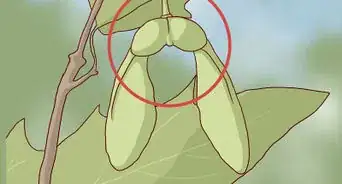
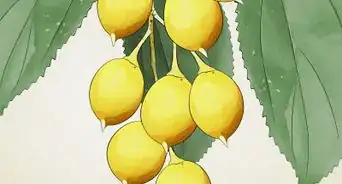

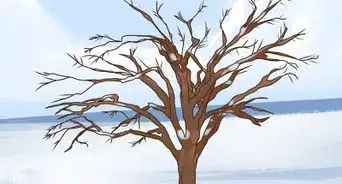
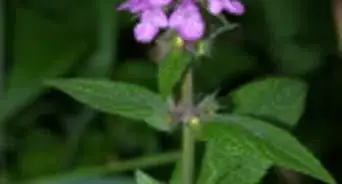
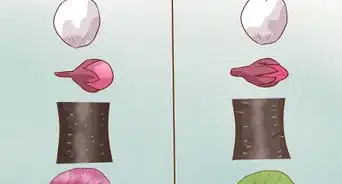



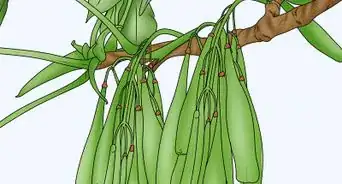
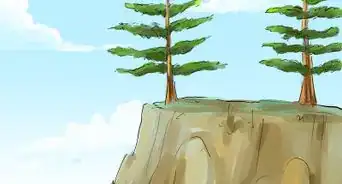
References
- ↑ http://ipm.ucanr.edu/PMG/PESTNOTES/pn7456.html
- ↑ https://ag.umass.edu/turf/fact-sheets/biology-management-of-crabgrass
- ↑ http://hyg.ipm.illinois.edu/article.php?id=786
- ↑ http://hyg.ipm.illinois.edu/article.php?id=786
- ↑ https://extension.umd.edu/resource/crabgrass
- ↑ https://extension.umd.edu/resource/crabgrass
- ↑ https://mastergardener.extension.wisc.edu/files/2016/01/Crabgrass-vs-Quackgrass.pdf
- ↑ https://crops.extension.iastate.edu/encyclopedia/large-crabgrass
- ↑ http://ipm.ucanr.edu/PMG/PESTNOTES/pn7456.html
- ↑ http://ipm.ucanr.edu/PMG/PESTNOTES/pn7456.html
- ↑ https://crops.extension.iastate.edu/encyclopedia/large-crabgrass
- ↑ https://ag.umass.edu/turf/fact-sheets/biology-management-of-crabgrass
- ↑ http://hyg.ipm.illinois.edu/article.php?id=786
- ↑ https://extension.umd.edu/resource/crabgrass
- ↑ http://ipm.ucanr.edu/PMG/PESTNOTES/pn7456.html
- ↑ https://www.bobvila.com/articles/best-crabgrass-killer/
- ↑ https://turf.purdue.edu/crabgrass/
- ↑ https://njaes.rutgers.edu/fs1309/
- ↑ https://www.bobvila.com/articles/best-crabgrass-killer/
- ↑ http://ipm.ucanr.edu/PMG/PESTNOTES/pn7456.html
- ↑ https://turf.unl.edu/NebGuides/Crabgrasscontrolhomelawn2010b.pdf
- ↑ http://ipm.ucanr.edu/PMG/PESTNOTES/pn7456.html
- ↑ https://extension.unh.edu/blog/2019/09/how-can-i-get-rid-crabgrass-my-lawn
- ↑ https://turf.unl.edu/NebGuides/Crabgrasscontrolhomelawn2010b.pdf
About This Article

